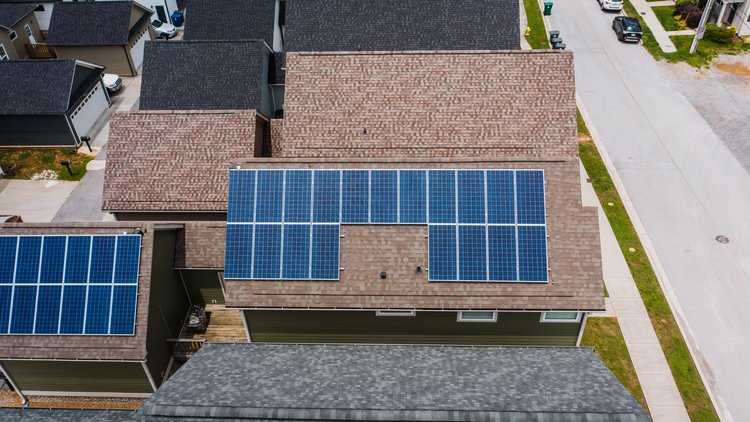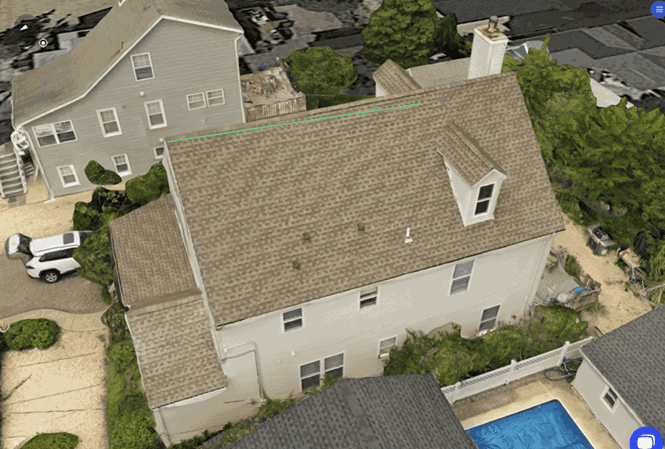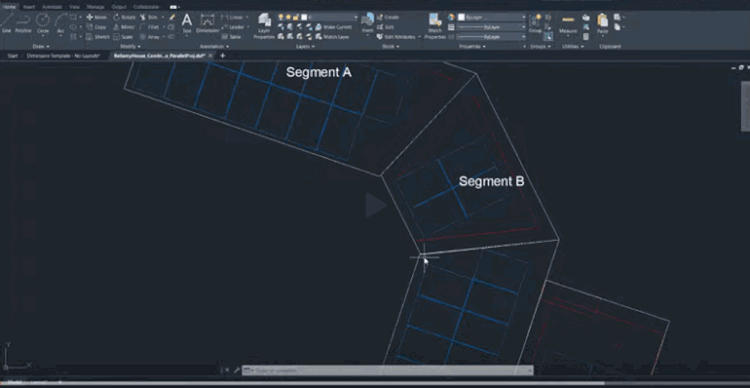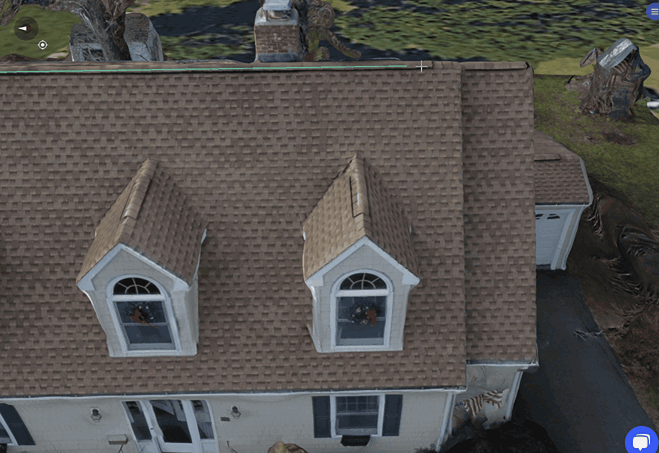Takeaway: While rooftops may not be perfectly square, it’s essential to square off your solar panel designs by hand, or using software like Scanifly or AutoCAD, for accurate installation that meet customer expectations. If corners aren’t squared off, imperfections in roof angles can cause visual and practical issues with panels.
Roofs are almost never perfectly square.
Outside of towers, dormers, hips, and other unique roof designs, most roofs are square or rectangular in nature—meaning, theoretically, they have 90-degree angles. However, this isn’t the case in reality, whether due to the house settling, a corner curling, or simply that construction might have been an inch or two off.
Tiny inaccuracies don’t matter to the roof’s ability to protect homeowners and keep out the elements. But for solar, you need to square off your designs before moving to permitting and installation planning, even though it’s “less accurate.”
Here’s why squaring off the corners matters so much.
Two Problems Happen When you Don’t Square Off Corners
Rectangular roofs that don’t have perfectly 90-degree corners aren’t a problem for day-to-day living, provided the roof isn’t damaged. But it causes problems in solar because solar panels themselves are squared off, meaning they need to be placed in a squared space.
When you measure with a drone, you’re getting perfectly accurate measurements (hand measuring usually claims to get perfect measurements, but this rarely occurs across a whole property). This usually includes those off-square corners where the house settled or a corner might have lifted up slightly.
But as you transfer these measurements into solar design, it causes two problems: one visual issue and one installation issue.
Visually, the panels look weird and almost slanted on the roof when you follow the wrong line. The result is even though it’s technically more accurate, it looks less accurate and can result in angry homeowners wondering why you messed up their roof. On the installation side of things, it could cause a problem where a panel sits a bit too close to the end of the roof on the short side, leaving it more open to damage.

How to Square Off Corners in Different Design Methods
The solution to both problems is to square off the roof to the shorter edges, creating an “ideal roof” in your design that you’ll place solar panels on.
For example, if you have a bungalow rectangle roof that’s supposed to be 11 feet by 30 feet, but the actual dimensions are 11 even x 30’1 x 11’2 x 30 even. To square it off, you’d go with the shorter angles—in this case an even 11 x 30 feet. Making 90-degree corners technically cuts off the additional roof area created by the uneven measurements, but gives you a proper square to work with when planning your array.
Squaring off corners can be done by hand, in Scanifly, or in AutoCAD. Here’s how each process works.
By hand: Manually recreate a square in your design paperwork before uploading to any software. For instance, if you measured an uneven roof, draw a full line to indicate the real measurements and then a dashed-line to indicate the squared-off portion.
In Scanifly: Use the 90 degree snap feature in the outline module to quickly adjust the plan.

90-degree snapping
In AutoCAD: Use the orthosnap feature that guides you back to square automatically when designing.

Working with curved roof types is a challenge that all solar contractors will have to accept. But when a roof is square or rectangle, you absolutely need to square off your designs to ensure you’re placing panels accurately.
Even if the end result is more accurate but looks “off” by a couple inches, it will look wrong and potentially anger your customers. Given that every finished solar project is like a billboard advertising your services, you want it to look good and ensure your customers are happy with how it looks on their home.






